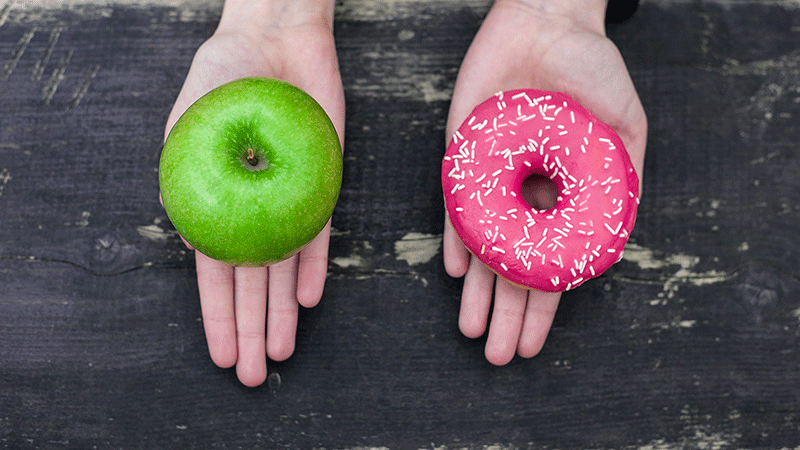Why Do I Eat When I’m Not Hungry?

Binge eating
Does this sound like you — able to control your portions sometimes but losing control and uncontrollably eating large amounts of food at other times? This is called "binge eating," and lots of people do it.
A binge is when you eat a lot of food in a short time, and it's usually not healthy food. Binge eating is bad for you, especially if you have diabetes.
Emotional eating
Many people eat when they are feeling upset, angry, stressed, sad, lonely or fearful. Emotions such as these can be powerful triggers to eat.
If you're an emotional eater, you can learn healthier ways to react to your emotions. Emotions usually don't last long — become mindful of yourself not eating for a short time, until the emotion passes. Try going for a brisk walk around the block or doing some yoga instead.
Nighttime eating
For many people, dinner is only the start of their nighttime eating. There's nothing wrong with a healthy snack such as fruit, plain popcorn or whole-wheat toast with a little peanut butter a couple of hours after dinner. However, nighttime eating is a problem when you eat large amounts of food or foods high in saturated fat, sodium and calories such as cookies, chips, full-fat ice cream, sandwiches or leftovers.
If nighttime eating is a problem for you, try to eat most of your calories during daylight hours. Reach for a light, healthy snack in the evening.
Instead of |
Try |
| Cookies | 1 piece whole-wheat toast with peanut butter |
| Candy | 1 piece fresh fruit |
| Chips | 2 cups of plain popcorn |
| Cheese and crackers | ½ cup fat-free or 1% cottage cheese with apple slices |
| Pizza | ½ to 1 cup of raw or cooked vegetables |
| Ice cream | ½ to 1 cup low-fat yogurt (flavored or plain) |
To help control binge, emotional and nighttime eating:
- Get into the habit of eating three healthy meals a day — breakfast, lunch and dinner — so you never get too hungry.
- Don't keep binge foods at home. If you're a binge eater, you know which foods you usually reach for. Common binge foods are cookies, candy, ice cream or chips.
- Make a list of other things you'll do instead of overeating. Here are some suggestions:
- Take a walk or enjoy another physical activity.
- Talk to a friend who can help you get your feelings under control.
- Do something you enjoy, such as reading, playing or listening to music, playing with pets or children, doing arts and crafts or taking a relaxing bath.
- Do some physical work, such as gardening or housecleaning.
If these behaviors become regular or you feel stuck, talk with your health care professional about what you can do.






